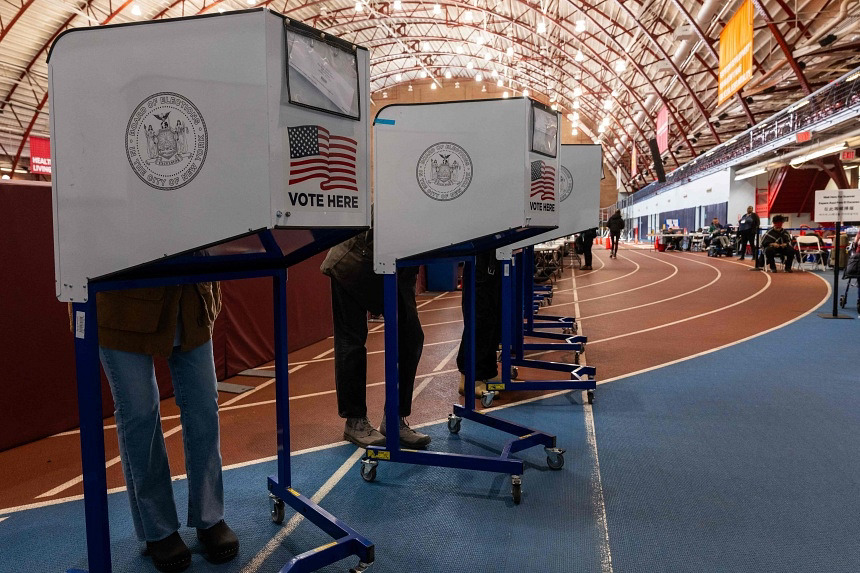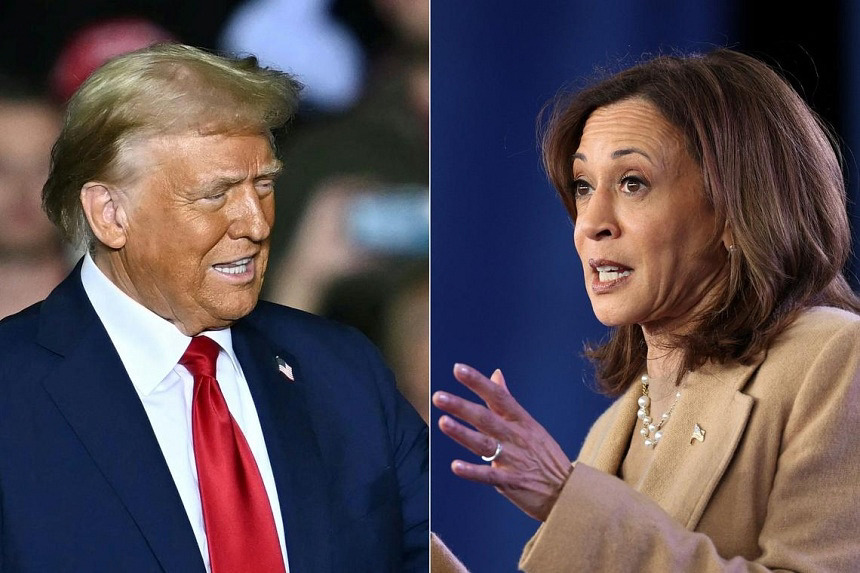US Election Day 2024: What you need to know

(Photo credit: AFP)
Source: The Straits Times
Voters head to the polling booth on Nov 5 for the presidential election, with Democrat Kamala Harris facing Republican Donald Trump in a contest that has significant implications for the US and the rest of the world.
By the numbers
Number of elgible voters: 244 million
Number of states: 50
Voter turnout in 2020: 66 per cent
Number of electoral votes needed to win: 270
The candidates


Main electoral arguments
US Vice-President Kamala Harris has tried to draw a sharp contrast with Donald Trump, positioning herself as a leader for change. But her policies align closely with those of President Joe Biden, such as tax cuts and investments in childcare and healthcare. Persistent inflation could also go against her.
Former president Trump contends that the economy was in better shape under him. He promises higher tariffs on Chinese imports and cuts in taxes and federal spending, and wants to rein in federal regulations. He also vows to return to an “America First” foreign policy and crack down on illegal immigration through mass deportations.
Key campaign issues
Abortion
Harris: With abortion rights at the centre of her campaign, she aims to galvanise women voters two years after the Supreme Court’s Republican majority overturned the 1973 Roe v Wade decision, which ruled that abortion was not constitutionally protected.
Trump: He opposes a national ban, but supports exceptions for rape, incest or the protection of a mother’s life. He also claims that he would not block access to abortion medication or in-vitro fertilisation treatment.
Border security
Harris: With illegal immigration surging since 2021, she acted as a liaison with Central American nations, but was not tasked with securing the US-Mexico border. New policies introduced in June, similar to Trump-era measures, have reduced recent illegal crossings.
Trump: He criticises Mr Biden’s lenient immigration policies and vows to fulfil his 2016 campaign promise of building a border wall and enforcing mass deportations if re-elected.
The Israel-Hamas war
Harris: Ms Harris and Mr Biden face criticism from Democrats for supporting Israel in the Gaza war. Although Ms Harris backs a ceasefire deal in return for the release of hostages held by Hamas, the expansion of the war to Lebanon has clouded the prospects.
Trump: The Republicans accuse Mr Biden and Ms Harris of showing “weakness” that emboldened Hamas. Trump supports Israeli Prime Minister Benjamin Netanyahu, who has tense relations with Mr Biden, but has also warned Israel to end the war or risk losing global support.
China
Harris: While the Biden administration wants to de-risk, not decouple, its relationship with China, it has imposed tariffs on more Chinese goods and sought to limit China’s access to advanced technology. In September, more tariffs were imposed on Chinese goods such as steel products and electric vehicle batteries.
Trump: He views China as an economic threat and wants to curb its rise by imposing higher tariffs on imports. In his first term as president, he started a trade war that continues to impact relations between the US and China.
Ukraine
Harris: Alongside Mr Biden, Ms Harris has advocated for providing weapons and other aid to Ukraine to prevent Russia from winning the war. This support has included substantial military aid packages, which have been blamed for contributing to the growing US debt.
Trump: He repeated questions whether aid for Ukraine is in the US’ national interest. He recently suggested the Kyiv should have capitulated to Moscow to avoid the invasion.
The Electoral College process
US voters do not directly elect the president and vice-president. Instead, these leaders are chosen by the Electoral College.
Each state is allocated a number of electoral votes based on how many members it has in the House, and its two Senate members. For example, California has 54 electors, Texas has 40, and Alaska, Delaware, Vermont and Wyomin have only three each.
In 48 states and Washington, the winner of the popular vote gets all the electoral votes for that state. Maine and Nebraska use a proportional system to distribute their votes.
The candidate who gets at least 270 of the 538 electoral votes wins the presidential election.
Battleground states
Most states are considered reliable Democratic or Republican strongholds, which means the outcome of the election usually depends on seven swing states - Michigan, Pennsylvania, Wisconsin, Arizona, Georgia, Nevada and North Carolina.
The biggest prize is Pennsylvnia, with 19 electoral votes.
What happens after the election?
Dec 17: Electors gather in their state capitals to cast votes for the president and vice-president
Jan 6, 2025: Congress convenes to certify the winner, a process closely watched following the Jan 6, 2021, attack on the US Capitol by a mob of Trump supporters attempting to block the certification.
Jan 20: The new president is sworn in.
